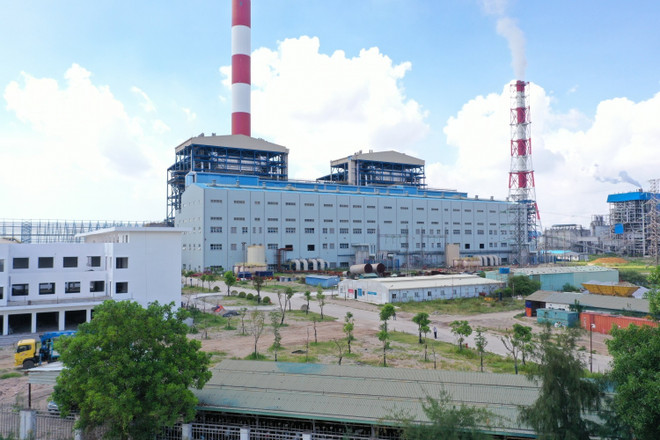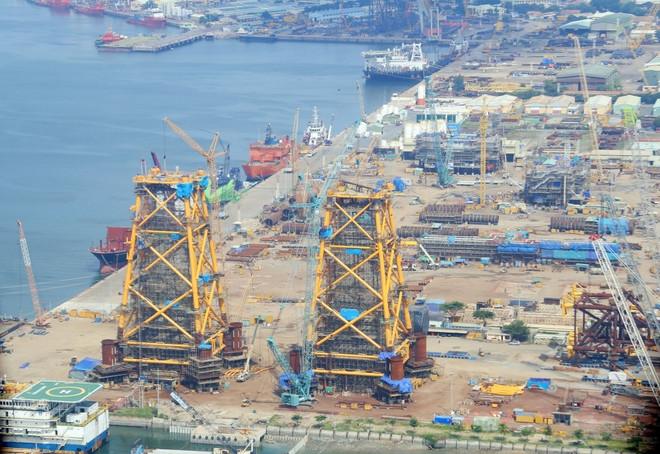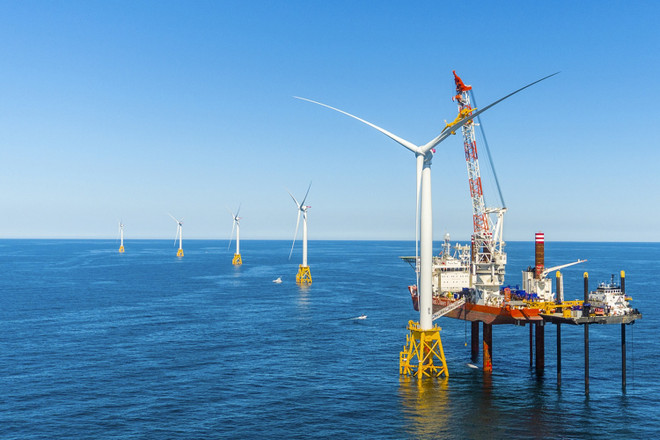Hanoi (VNA) - The Vietnam Oil and Gas Group (Petrovietnam) is striving to raise its total installed power capacity to 8,000-14,000 MW by 2030, which is projected to account for 8-10% of the country’s combined capacity by 2045, under its revised strategy.
Meanwhile, renewable energy is expected to make up 5-10% of the group’s accumulative electricity capacity by 2030 and 10-20% by 2045.
The group has identified power industry as a key sector in national industrialisation and modernisation, and one of its main five business fields. Therefore, in 2001, it began to invest in Ca Mau Thermal Power Plants 1 and 2. In 2007, it established PetroVietnam Power Corporation (PV Power) and management boards tasked with monitoring the investment and operation of power projects as assigned by the Government.
The operation and maintenance work for the group's gas, hydroelectric and coal-fired power plants has been running smoothly, while due attention has been paid to management over investment and construction of power plants.
Petrovietnam is proud to be the second largest electricity producer, and the biggest gas-fired electricity producer nationwide, with four plants in gas power, three in coal power and two in hydro power, with a combined installed capacity at about 6,605 MW, equivalent to 8% of the national capacity. The group accounts for 10-12% of national electricity output, contributing to ensuring national energy security, especially during dry seasons.

To fulfill its mission of becoming a leading energy group of the country and the region as well, which catches up with new development trends, Petrovietnam has been working to improve efficiency and professionalism in the operation, production and business of its power plants.
In 2020, the group completed a project on the establishment of a unit - the Petrovietnam Power Generation Branch (PVPGB), in charge of managing power plants invested by Petrovietnam in order to maximise resources in terms of personnel, experience and materials.
Currently, the PVPGB is performing the tasks assigned and authorised by Petrovietnam. Besides, with the huge assets under its management, and a contingent of more than 1,000 officials, engineers and skilled labourers, PVPGB is expected to play a crucial role in the group’s ecosystem.
Petrovietnam's electricity and renewable energy industry has enough and highly qualified human resources who can ensure safe operation of plants as well as the maintenance work.
The group is promoting the research and development of gas power projects, prioritising the use of domestic gas and imported liquefied natural gas. In addition, it aims to optimise existing infrastructure to boost renewable energy development, especially offshore wind and solar energy for electricity generation.

The Petrovietnam Technical Services Corporation (PTSC), a member of Petrovietnam, and its Singaporean partner Sembcorp Utilities Pte Ltd in August 2023 were granted a survey licence and a letter of intent to carry out the steps related to a project on developing offshore renewable energy in Vietnam and exporting clean electricity to Singapore.
The granting took place in the presence of Prime Ministers Pham Minh Chinh and Lee Hsien Loong as part of a conference to promote investment cooperation projects between the two countries.
The Vietnamese Ministry of Natural Resources and Environment (MoNRE) handed over a decision approving the monitoring, investigation, surveying, and assessment of marine resources to PTSC. Meanwhile, the Singaporean Ministry of Trade and Industry presented a letter of intent approving this project to Sembcorp.
The moves enabled the two enterprises to take the next steps in their offshore renewable energy project in Vietnam to export clean electricity to Singapore.
With this licence, PTSC is currently the first and only investor in Vietnam to have been permitted by the MoNRE to monitor, investigate, survey, and assess marine resources to develop offshore wind power.

Petrovietnam has also seen energy transition as a target and a compulsory task on the path towards the key energy group of the national economy that guides enterprises in other economic sectors.
Therefore, in 2019, it began building relevant plans and roadmaps, and working together with its member units to make thorough preparations for the energy transition process by producing and using alternative renewable energy sources./.




























